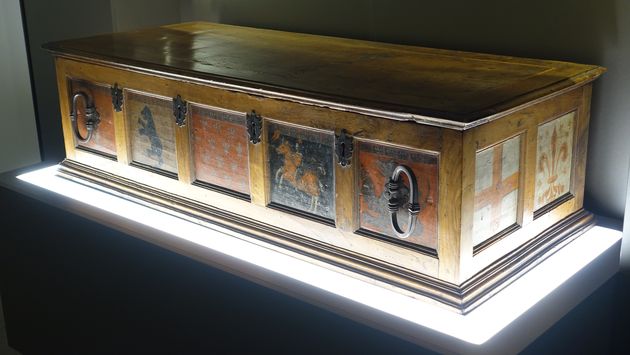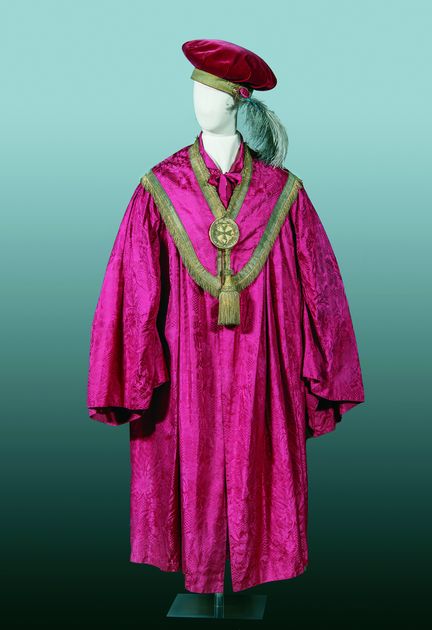Orazio Fidani was one of the best-known artists in mid-17th century Florence, both for his talent and his authoritativeness. The choice made by Lorenzo Calvi, father of the Oratory of Santa Caterina de’Ricci e San Filippo Neri, of such a renowned artist for such a delicate commission was significant. The painting, in facts, was emblematic of the spiritual needs arising after 1653, celebrating the historical moment in which Grand Duke Ferdinando II de’ Medici granted Prato the privilege of becoming a “city”.
The composition required an accurate representation of the procession in the Cathedral square which had followed the solemn entry into Prato on 4th January 1653 of the first bishop, Monsignor Gerini. The scene was reproduced in a small format in the left part of the painting; above this is a placid image of the Madonna with Child. This image is studded with angels and wrapped in a delicate chiaroscuro which extends to the main figure, St. Philip Neri, who is kneeling in the foreground and invoking the Virgin Mary’s protection of the town in front of a bunch of white lilies.
This painting is one of the last works of Orazio FIdani, who died suddently at the beginning of 1656, leaving it unfinished; the altarpiece was then completed by the young painter Lorenzo Lippi, chosen by the same father Calvi because his ability to reproduce Fidani’s style.










